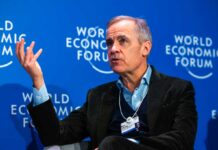NetNewsLedger Politics 2.0 | Ontario’s Economic Response
TORONTO, ON – Facing renewed economic instability fuelled by U.S. tariffs under President Trump, the Ford government has announced an $11 billion economic relief plan to protect Ontario workers and businesses.
Framing the move as essential to securing the province’s future, Premier Doug Ford promised aggressive action to keep people employed, maintain business liquidity, and accelerate Ontario’s competitiveness in the global economy.
“We can’t control President Trump,” Ford said, “but we’re in full control of the kind of future we build for ourselves.”
 Key Measures in the Ontario Economic Support Plan
Key Measures in the Ontario Economic Support Plan
-
$9 Billion in Tax Deferrals (April–October 2025)
-
Businesses will have six months of interest and penalty relief on key provincially administered taxes.
-
Applies to over 80,000 Ontario businesses.
-
Includes deferrals on the Employer Health Tax, Fuel Tax, Mining Tax, Beer/Wine/Spirits Tax, and more.
-
-
$2 Billion in New WSIB Rebates
-
A second round of surplus rebates for safe employers through the Workplace Safety and Insurance Board (WSIB).
-
Follows a previous $2 billion rebate issued in March 2025.
-
-
Breaking Down Internal Trade Barriers
-
Ontario will act to remove interprovincial trade obstacles, making it easier for businesses to expand across Canada.
-
-
Accelerated Development Timelines
-
The government will speed up permitting and approvals for new projects to drive job creation.
-
-
Workforce Retooling Support
-
Help for businesses to retrain workers and diversify into new global markets beyond the United States.
-
 Fact Check: Is Ontario’s Economy Under Threat?
Fact Check: Is Ontario’s Economy Under Threat?
Claim: “Trump’s tariffs are putting Ontario jobs and savings at risk.”
Reality:
-
The U.S. has implemented a new wave of tariffs targeting Canadian steel, autos, and energy.
-
Ontario—home to key manufacturing and resource-based industries—is particularly vulnerable.
-
The OECD and IMF both warn of increased uncertainty, but Canada’s fundamentals remain strong.
-
Ontario’s job growth has slowed slightly in Q1 2025, with concerns over supply chains and exports.
Verdict: 
Ontario’s economy is not in crisis, but is clearly exposed to global shocks—particularly those from the U.S.
 Quick Facts
Quick Facts
-
Tax deferral applies to 10 provincial business tax streams, including the Gasoline Tax and Insurance Premium Tax.
-
Taxes deferred from April 1 to October 1, 2025, must be paid by the deadline to avoid penalties.
-
WSIB rebates distributed in March benefited over 280,000 businesses.
-
The province has also waived fees for apprenticeship exams, saving trainees up to $330 each.
 How It Compares: Ontario vs Federal Plans
How It Compares: Ontario vs Federal Plans
| Action Area | Ontario (Ford Government) | Federal Liberals (Carney) | Federal NDP (Singh) |
|---|---|---|---|
| Tax Relief | $9B in deferred provincial taxes | Deferred corporate taxes + HST | Expand corporate taxes on profits |
| WSIB/Business Rebate | $2B to safe employers | No direct equivalent | Public sector employment expansion |
| Trade Strategy | Break down interprovincial barriers | Moderate trade diversification | Focus on local economies and worker protections |
| Infrastructure Acceleration | Fast-tracked approvals | Infrastructure tied to emissions goals | Green energy-focused infrastructure |
| Worker Training & Reskilling | Business support for retooling | 100,000 skilled trades training (federal) | Public training programs with union focus |
| Tariff Response | Direct economic stimulus | Federal liquidity and pension protection | Wealth taxes, social investment to offset inflation |
 What It Means for Northwestern Ontario
What It Means for Northwestern Ontario
The Ford government’s plan could provide immediate relief for small and mid-sized businesses in Thunder Bay, Dryden, and Fort Frances, particularly those in forestry, mining, logistics, and manufacturing as affected by U.S. tariffs.
The WSIB rebates and tax deferrals will help employers keep staff on payroll. The emphasis on speeding up development timelines could also accelerate regional infrastructure and housing projects.
But critics may argue that the plan is heavily focused on short-term liquidity and business-first strategies, with less emphasis on climate, equity, or long-term economic transformation.








